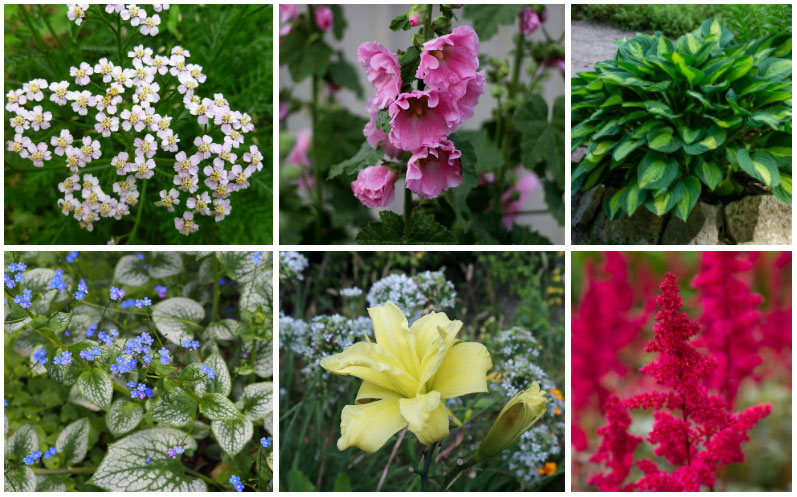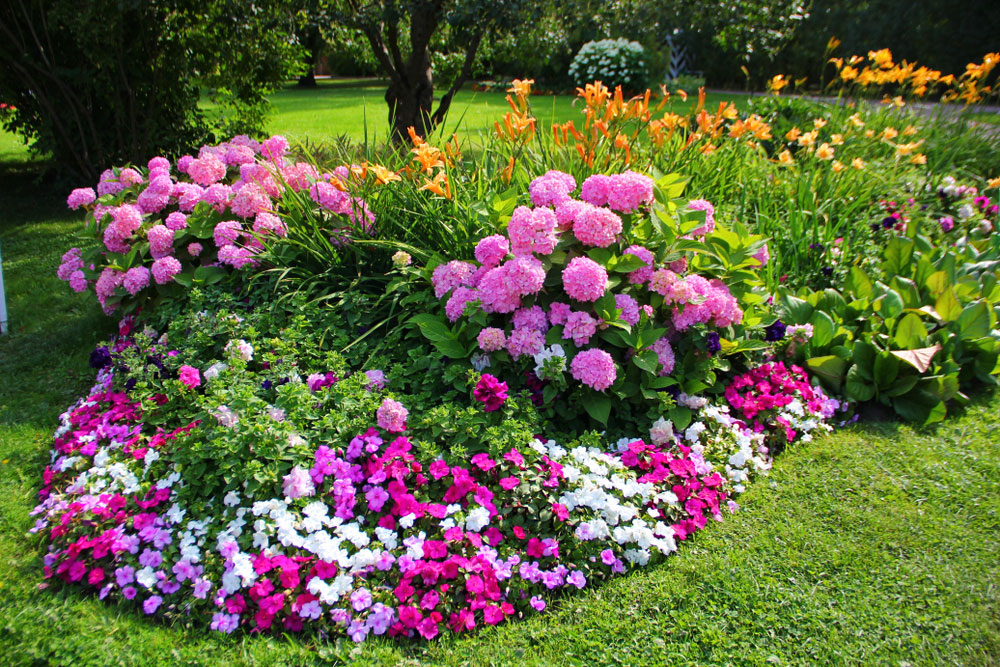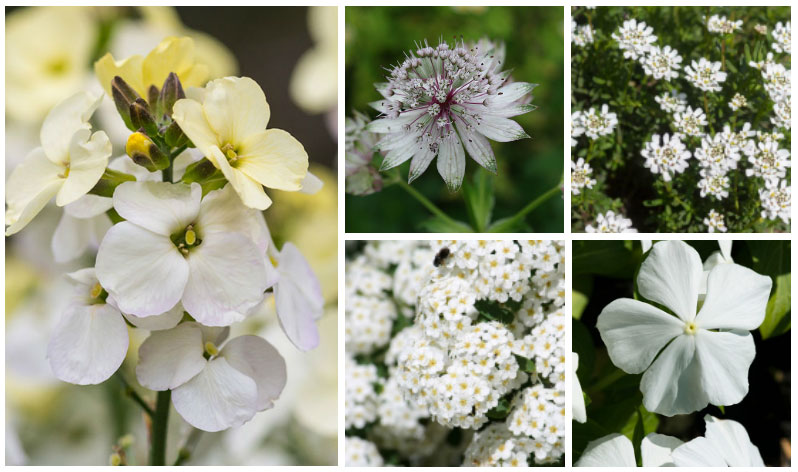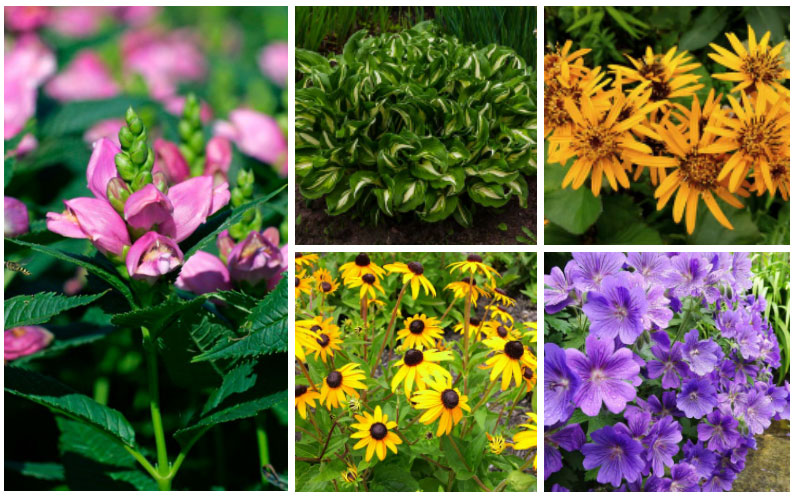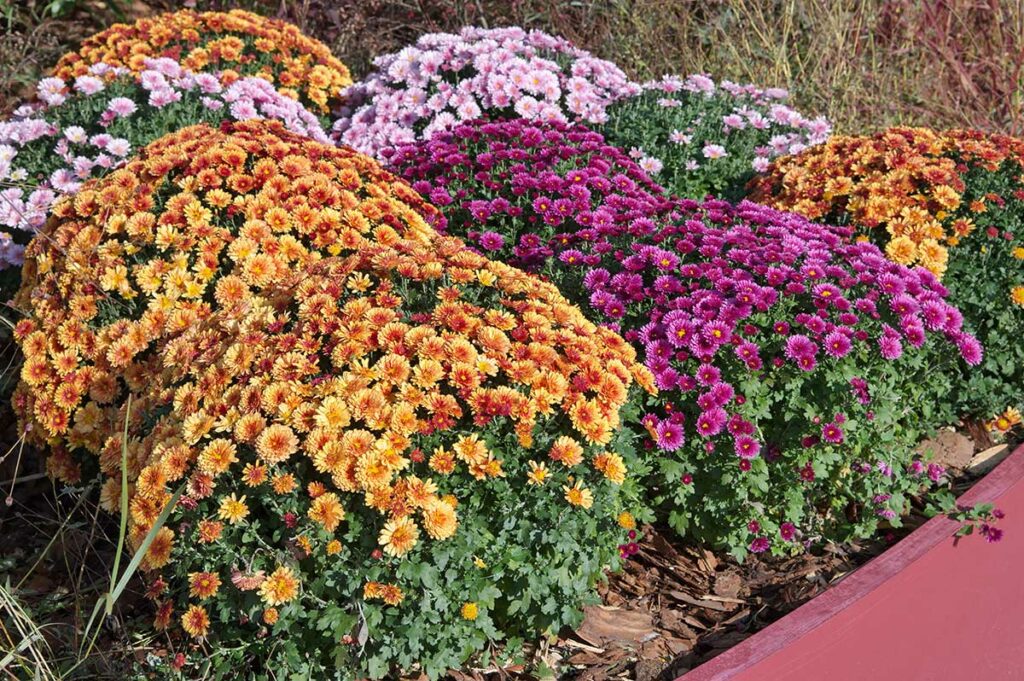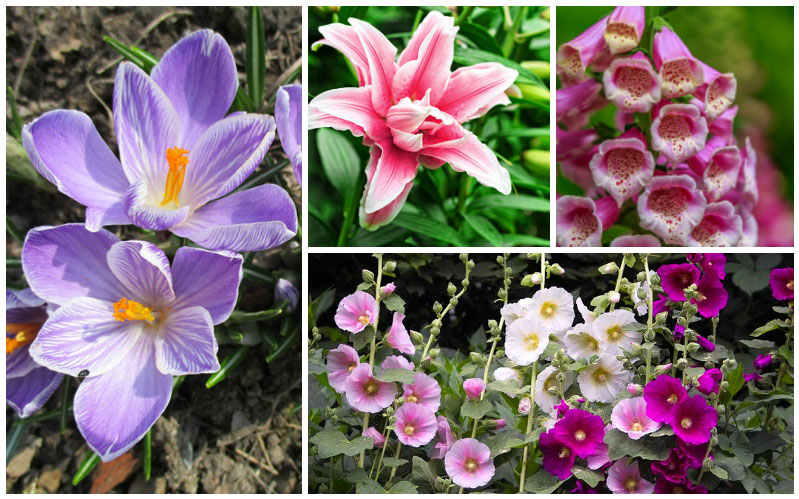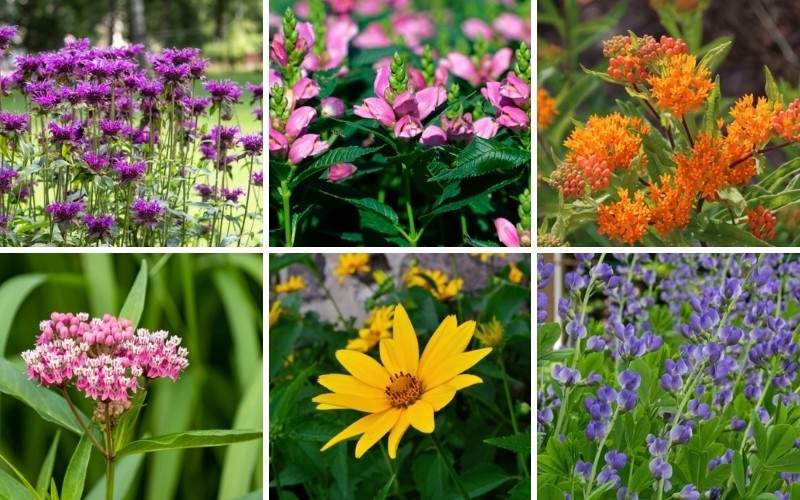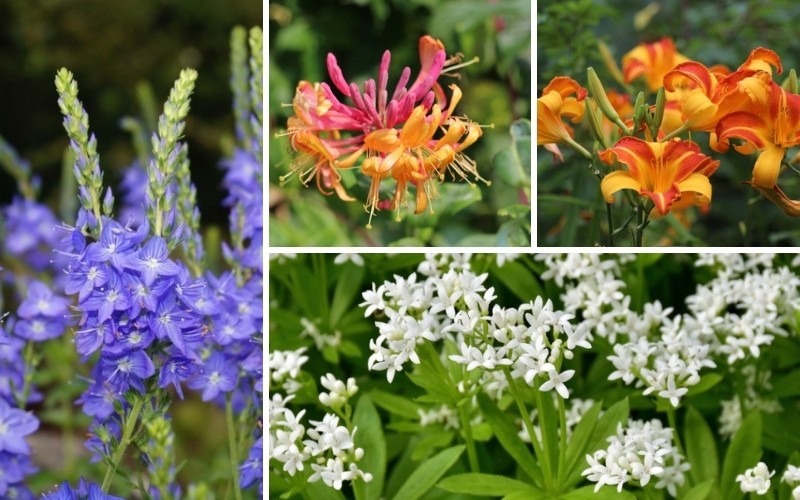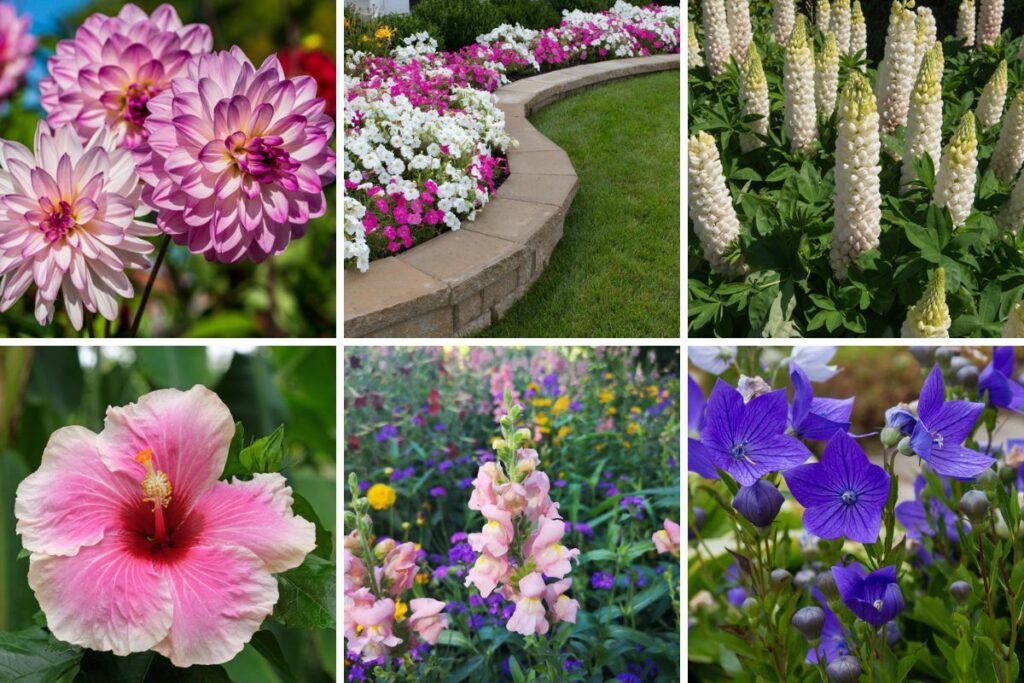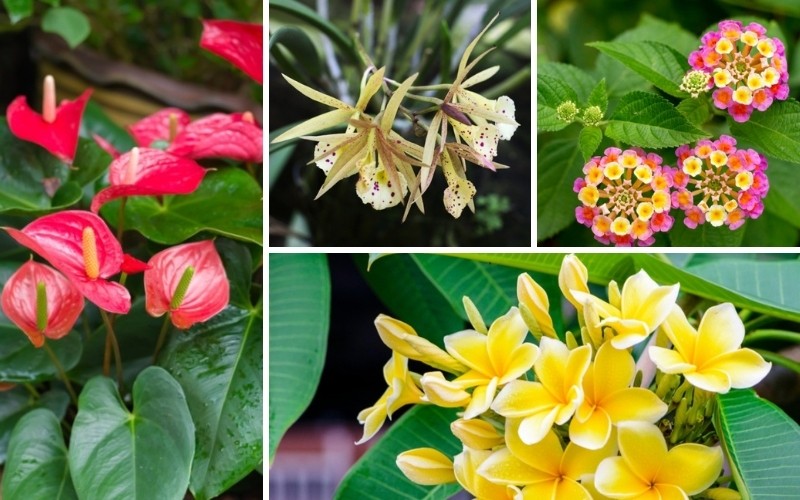
The state of Hawaii encompasses USDA plant hardiness zones 9a to 13a making it a tropical paradise when it comes to gardening. Not only can you garden successfully all year, you can grow flowers and plants that those in cooler climates can only dream of.
While some plants that thrive in zone 13 may struggle in zone 9, the following perennials should do well throughout Hawaii. Keep in mind that hardiness and growing requirements can vary among cultivars of the same plant. It is wise to check the plant identification label carefully to determine if a plant matches your hardiness zone and growing conditions.
Anthurium (Anthurium spp.)
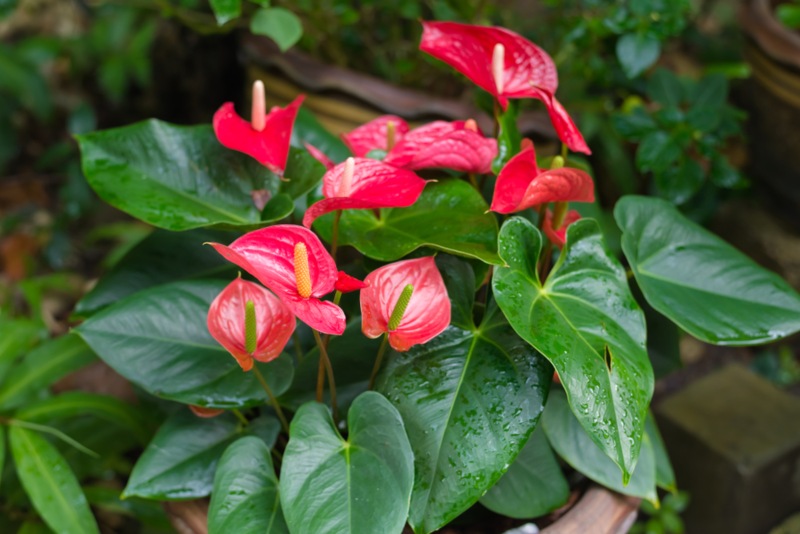
This delightful plant may be a houseplant to much of the continental U.S. but it thrives in the garden in tropical or sub-tropical regions making it a wonderful choice for your Hawaiian perennial bed. This plant grows to heights of 1 to 2 feet and flowers freely throughout the year. Its showy leaves and waxy heart-shaped blooms in shades of pink and red bring life to the landscape. Anthurium prefers indirect light and will suffer in too much sun. It needs evenly moist soil and benefits from a high phosphorus fertilizer 3 to 4 times a year. Most are hardy in zones 10 and above.
Blue Ginger (Dichorisandra thyrsiflora)
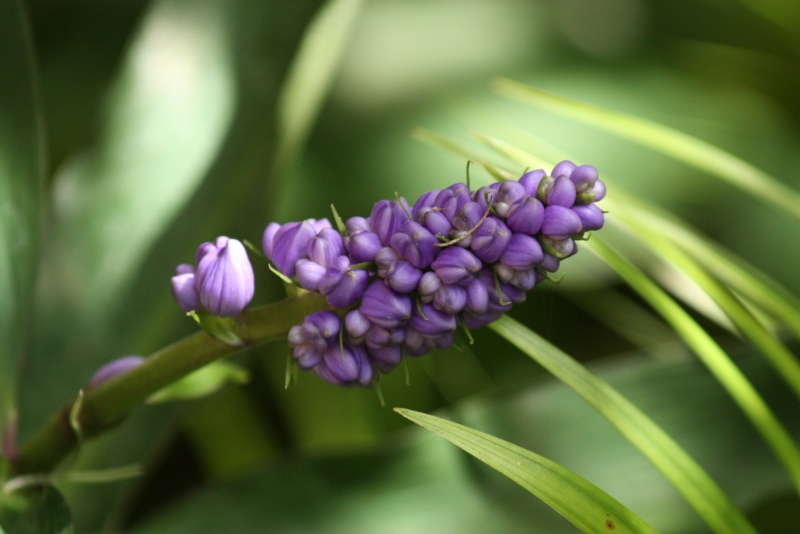
The striking blue-violet blooms of blue ginger are sure to steal the show as they rise above its ginger-like foliage. The glossy leaves are deep green above with purple undertones beneath. They grow to heights of 8 feet with a spread of 3 feet or more. It prefers humus-rich soil and thrives in partial shade. It is hardy in USDA plant hardiness zone 10 through 12.
Hawaiian Hibiscus (Hibiscus spp.)
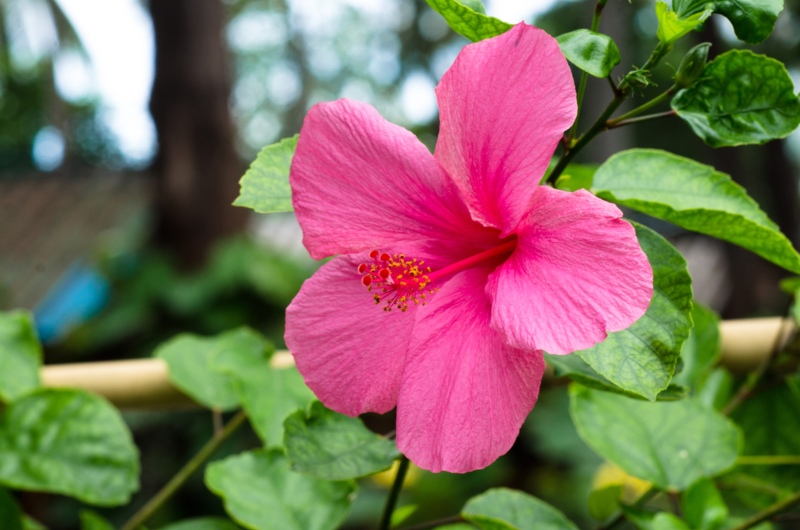
Hawaii is home to seven varieties of hibiscus with the Chinese hibiscus being the most popular. Bright, showy flowers range in color from yellow, apricot and peach to brilliant shades of pink, orange and red. The blooms range from 4 to 8 inches across and can be either single or double petaled. They prefer humus-rich, evenly moist soil and thrive in full sun. They are hardy in USDA plant hardiness zones 9 through 11.
Bird of Paradise (Sterlitzia reginae)
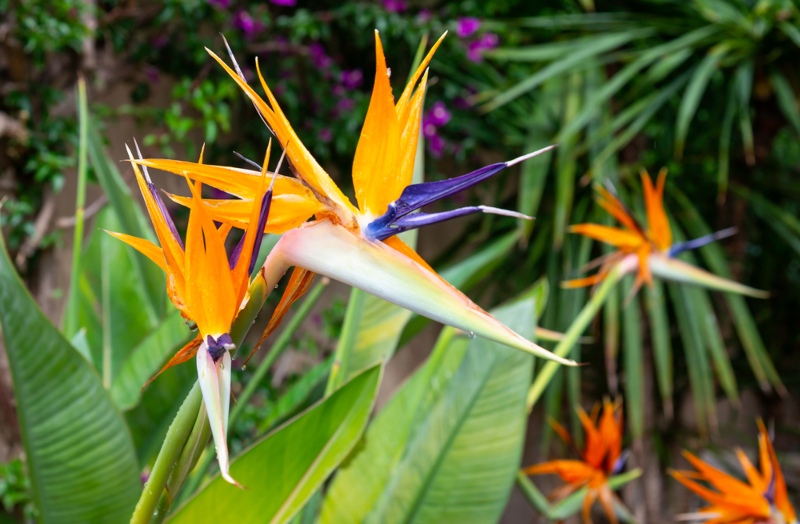
These amazing plants produce brightly-colored flowers that resemble a bird in flight. It grows to heights of 3 to 6 feet with a spread of 3 to 4 feet. It prefers full sun, but will grow in less light. However, this plant suffers and does not bloom as well in low light. It prefers humus-rich soil that drains well. Bird of paradise in hardy in USDA plant hardiness zones 9 through 11.
Mile-a-Minute Vine (Ipomoea cairica)
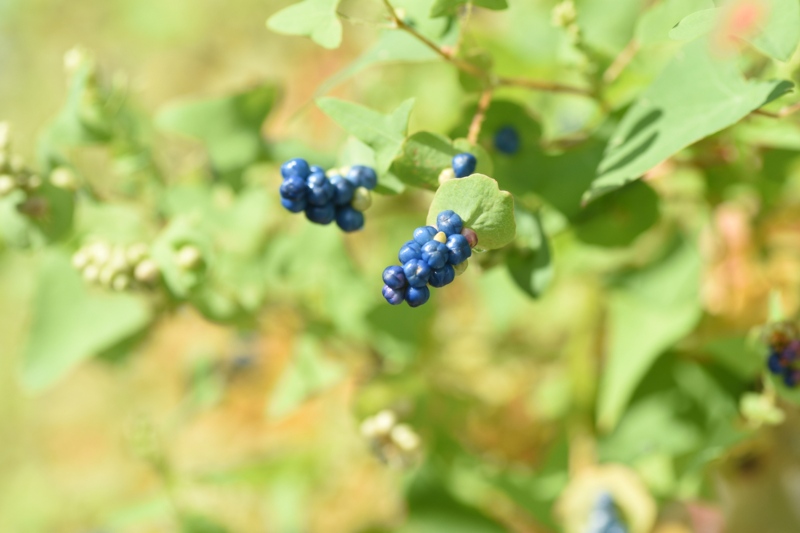
For quick color that seems to reach for the sky, try the Mile-a-Minute vine. This impressive vine climbs quickly, covering trees, fences or trellises with an abundance of trumpet-shaped blooms that range from white to marvelous shades of purple and violet. They reach heights of 16 feet or more and prefer full sun to partial shade. This plant can be invasive.
Lantana (Lantana camara)

This flower has a bad reputation as an invasive weed, but if you are looking to attract bees, butterflies and hummingbirds to your flowerbed, lantana may be a good choice for you. The umbrella shaped head is made of dozens of tiny flowers that open as yellow or orange and turn to pink when they are pollinated. It grows to heights of 6 feet or more. It prefers full sun and average soil. It is hardy in USDA plant hardiness zones 10 and above.
Flowering Banana (Musa ornata)
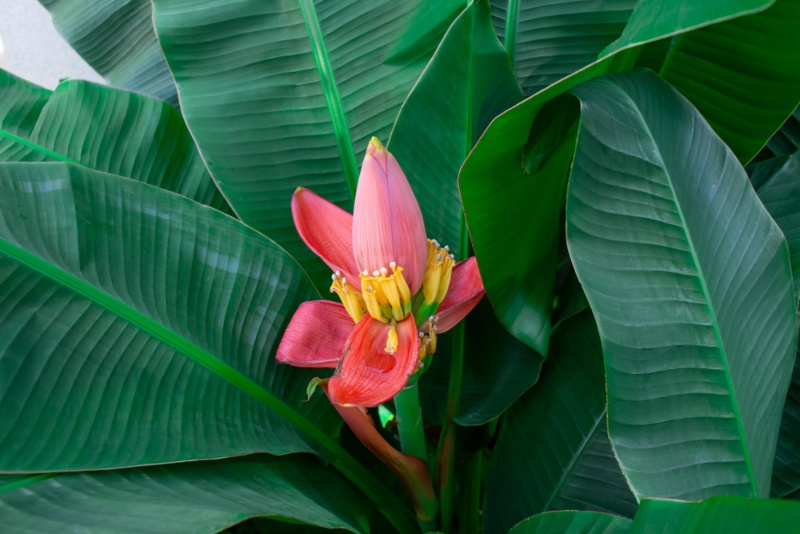
This ornamental banana plant produces impressive foliage and striking pink to purple bracts with rows of yellow-orange flowers that later produce small yellow-green or purple bananas. While the bananas are edible, they are often too seedy for the effort. It grows to heights of 6 to 9 feet with a spread nearly as wide. It prefers full sun and thrives in evenly moist, organic soil that drains well. It is hardy in USDA plant hardiness zones 9 through 11.
Nun’s-hood Orchid (Phaius tancarvilleae)
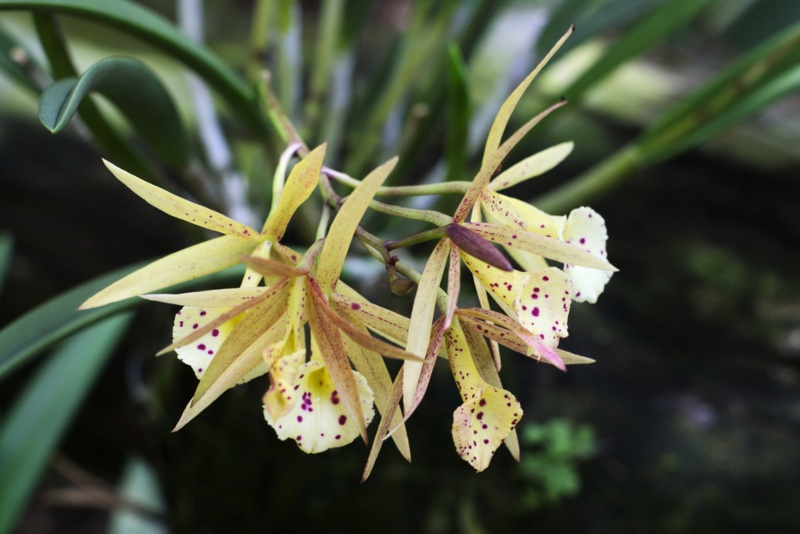
The Nun’s-hood orchid produces a showy display with clusters of white, pink and brown flowers atop an erect 4-foot stem. These impressive blooms are 3 to 5 inches across creating a show of color for 4 to 6 weeks. It prefers partial sun and soil that dries out before it is watered again. It is hardy in USDA plant hardiness zones 9 through 12.
Singapore Plumeria (Plumeria obtusa)
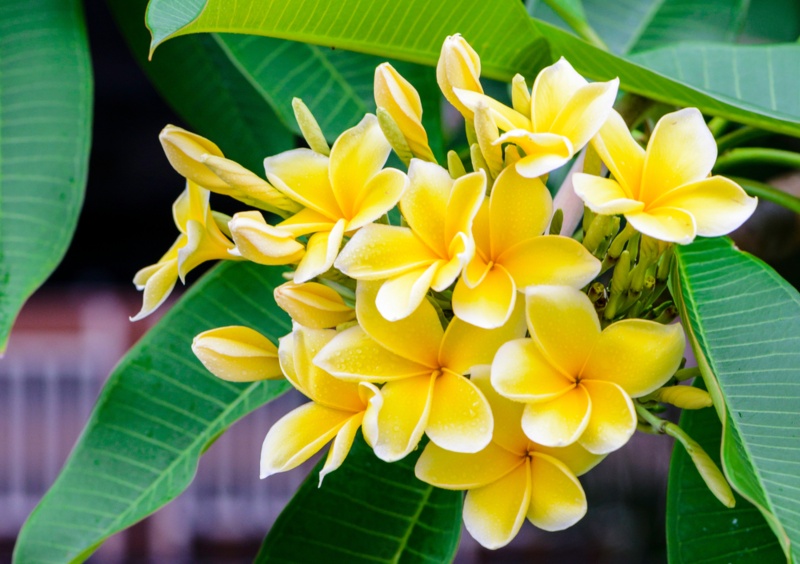
Although this perennial is technically a tree it cannot be overlooked for its striking beauty and intense fragrance. It produces waxy white, 5-petaled flowers with delicate yellow throats. Blooms typically appear in mid to late summer, but they can vary in blooming time. This small tree grows to heights of 10 to 15 feet and prefers sun and grows well in average to dry soil. It is hardy in USDA plant hardiness zones 10 through 12.
Blue Butterfly Bush (Rotheca myricoides)
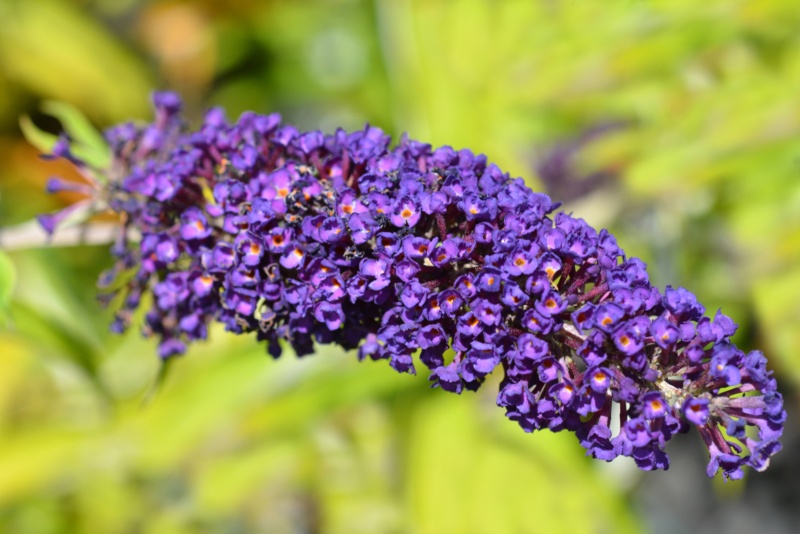
This evergreen shrub earns its name from the delicate, blue 5-petaled flowers that reassemble a butterfly in flight. It grows to heights of 6 to 10 feet with a similar width and blooms all summer. It grows well in either full sun or partial shade and prefers average well drained soil. It is hardy in USDA plant hardiness zones 9 through 11.
Black-Eyed Susan Vine (Thunbergia alata)
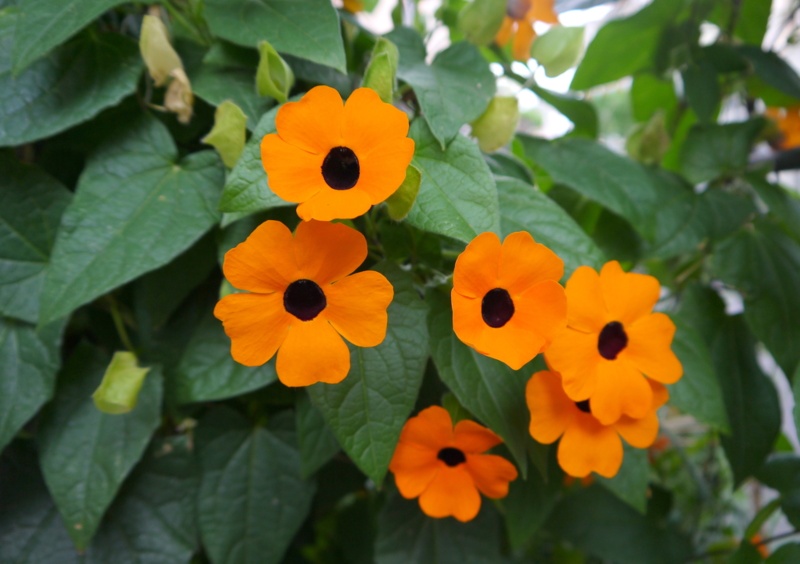
The black-eyed Susan vine is an easy-to-grow perennial vine that climbs trellises, walls and fences with little guidance from you. These vines produce masses of lobed, tubular flowers that attract hummingbirds. Flower color ranges from deep orange with a distinct dark eye to shades of yellow, white, pink and salmon. They grow to heights of 8 feet and prefer full sun to partial shade and average well-drained soil. They are hardy in USDA plant hardiness zones 10 through 11.
Nasturium (Tropaeolum majus)
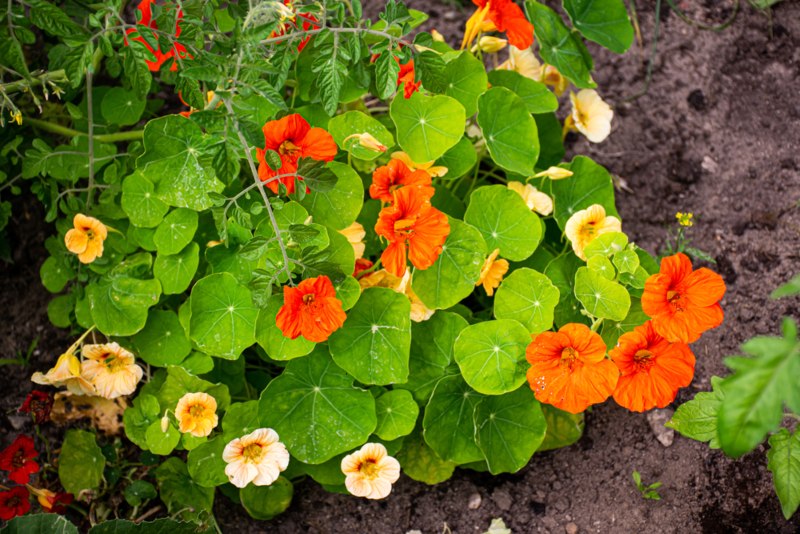
This fiery little vining flower produces masses of brightly-colored tubular flowers throughout the year. Flower colors range from yellow and orange to brilliant reds and gold with many bicolors, too. They typically grow to heights of 5 feet or more, depending on the variety. They prefer full sun but will grow in light shade. Nasturtiums thrive in humus-rich, well-drained soil, but will tolerate nearly any soil. Nasturtiums are hardy in USDA plant hardiness zones 9 through 11.
Conclusion
Many tropical and subtropical flowers may be listed as hardy to zone 11 as that is the limit to the hardiness zones in the continental U.S. However, most that are hardy to zone 11 will also do well in zones 12 and 13. If you are in doubt about whether a particular perennial will do well in your area, consult a local expert or observe what grows well in your neighborhood. Always check the plant identification label to make sure the plant is suited for your location.





